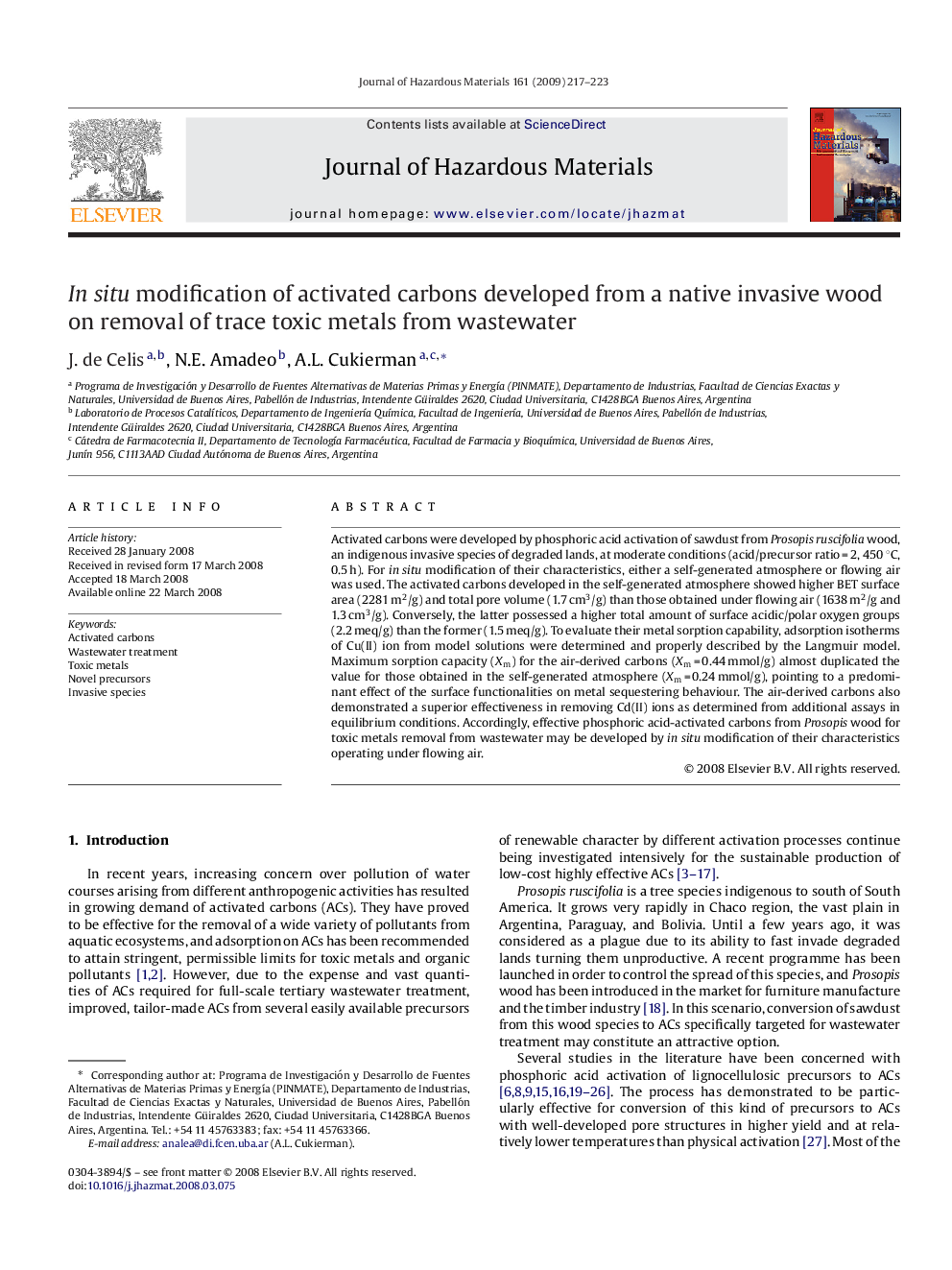| Article ID | Journal | Published Year | Pages | File Type |
|---|---|---|---|---|
| 581484 | Journal of Hazardous Materials | 2009 | 7 Pages |
Abstract
Activated carbons were developed by phosphoric acid activation of sawdust from Prosopis ruscifolia wood, an indigenous invasive species of degraded lands, at moderate conditions (acid/precursor ratio = 2, 450 °C, 0.5 h). For in situ modification of their characteristics, either a self-generated atmosphere or flowing air was used. The activated carbons developed in the self-generated atmosphere showed higher BET surface area (2281 m2/g) and total pore volume (1.7 cm3/g) than those obtained under flowing air (1638 m2/g and 1.3 cm3/g). Conversely, the latter possessed a higher total amount of surface acidic/polar oxygen groups (2.2 meq/g) than the former (1.5 meq/g). To evaluate their metal sorption capability, adsorption isotherms of Cu(II) ion from model solutions were determined and properly described by the Langmuir model. Maximum sorption capacity (Xm) for the air-derived carbons (Xm = 0.44 mmol/g) almost duplicated the value for those obtained in the self-generated atmosphere (Xm = 0.24 mmol/g), pointing to a predominant effect of the surface functionalities on metal sequestering behaviour. The air-derived carbons also demonstrated a superior effectiveness in removing Cd(II) ions as determined from additional assays in equilibrium conditions. Accordingly, effective phosphoric acid-activated carbons from Prosopis wood for toxic metals removal from wastewater may be developed by in situ modification of their characteristics operating under flowing air.
Related Topics
Physical Sciences and Engineering
Chemical Engineering
Chemical Health and Safety
Authors
J. de Celis, N.E. Amadeo, A.L. Cukierman,
